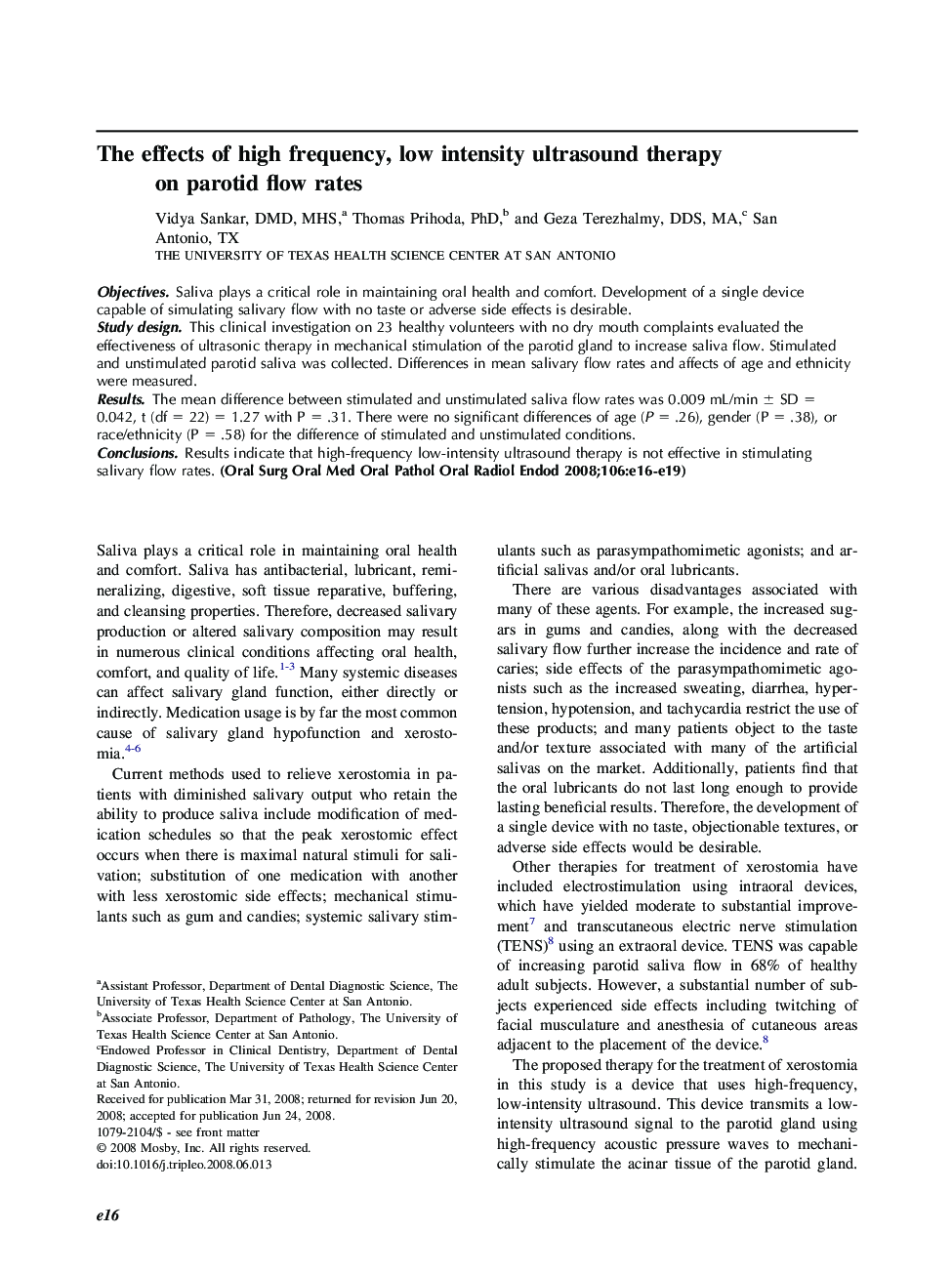| Article ID | Journal | Published Year | Pages | File Type |
|---|---|---|---|---|
| 3168714 | Oral Surgery, Oral Medicine, Oral Pathology, Oral Radiology, and Endodontology | 2008 | 4 Pages |
ObjectivesSaliva plays a critical role in maintaining oral health and comfort. Development of a single device capable of simulating salivary flow with no taste or adverse side effects is desirable.Study designThis clinical investigation on 23 healthy volunteers with no dry mouth complaints evaluated the effectiveness of ultrasonic therapy in mechanical stimulation of the parotid gland to increase saliva flow. Stimulated and unstimulated parotid saliva was collected. Differences in mean salivary flow rates and affects of age and ethnicity were measured.ResultsThe mean difference between stimulated and unstimulated saliva flow rates was 0.009 mL/min ± SD = 0.042, t (df = 22) = 1.27 with P = .31. There were no significant differences of age (P = .26), gender (P = .38), or race/ethnicity (P = .58) for the difference of stimulated and unstimulated conditions.ConclusionsResults indicate that high-frequency low-intensity ultrasound therapy is not effective in stimulating salivary flow rates.
